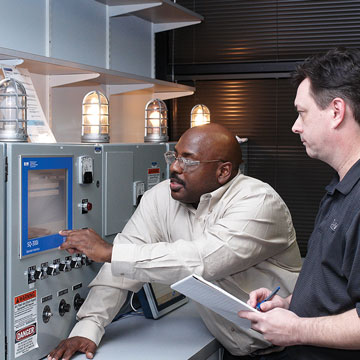Achieve Excellence in Every Information: Engineering Support Services for Measured Building Surveying, Topographical Surveys, and Beyond
Achieve Excellence in Every Information: Engineering Support Services for Measured Building Surveying, Topographical Surveys, and Beyond
Blog Article
Making Best Use Of Source Allowance Via Strategic Evaluating Practices
In the realm of strategic resource appropriation, the practice of surveying stands as a crucial device for companies aiming to enhance their performance and effect. By methodically accumulating understandings and data, tactical evaluating practices use a roadmap for informed decision-making and source circulation.
Importance of Strategic Checking Practices
Strategic checking methods play an essential function in identifying the efficient allowance of sources within companies. By performing critical surveys, firms can collect important data and insights that aid in making educated decisions pertaining to the appropriation of resources such as manpower, time, and budget plan. These methods supply a structured method to comprehending the existing state of the company, recognizing locations for enhancement, and straightening sources with tactical objectives.
One vital value of calculated surveying techniques is that they help organizations prioritize their initiatives based on real-time feedback from stakeholders. This ensures that sources are guided towards tasks or tasks that have the greatest influence on attaining business objectives. Furthermore, strategic surveys make it possible for companies to adjust to altering market problems, consumer choices, and interior capacities by constantly checking and evaluating source allocation approaches.
Event Insights From Stakeholders
Incorporating responses from stakeholders is vital for companies executing critical surveying techniques to properly allot resources and drive decision-making procedures. Stakeholders, including workers, customers, distributors, and neighborhood participants, hold useful insights that can substantially impact the success of strategic efforts. Topographical Surveying. Engaging with stakeholders via surveys, interviews, emphasis teams, and comments sessions permits companies to gain a much deeper understanding of their demands, issues, and choices
By gathering insights from stakeholders, companies can determine key areas for renovation, prioritize resource allotment based upon actual needs, and align calculated goals with stakeholder expectations. In addition, entailing stakeholders in the decision-making process promotes a sense of possession and commitment, resulting in enhanced buy-in and support for critical initiatives.
In addition, stakeholders usually provide special perspectives and cutting-edge concepts that might not have been taken into consideration inside. By actively listening to and including stakeholder comments, organizations can enhance their strategic surveying practices, make more educated choices, and eventually achieve much better end results.
Utilizing Data-Driven Approaches
Using data-driven methods is paramount for organizations seeking to improve the performance of their resource allotment approaches and decision-making processes. By leveraging information analytics and advanced innovations, organizations can draw out useful insights to maximize resource appropriation, identify patterns, and make educated decisions. Data-driven strategies make it possible for organizations to allot sources based upon empirical proof instead of instinct, bring about a lot more efficient and reliable like this results.

In addition, companies can use anticipating analytics to anticipate future resource needs and allot sources proactively. Engineering surveys. By leveraging historical information and trend evaluation, organizations can expect demand changes and change their source allocation approaches appropriately. On the whole, accepting data-driven strategies empowers companies to make educated choices that maximize resource allotment efficiency and drive sustainable growth
Identifying Areas for Renovation
Identifying areas for enhancement is a crucial step in the procedure of taking full advantage of resource allotment. By identifying where inadequacies or traffic jams exist within the company, decision-makers can route resources in the direction of addressing these certain areas.
One effective method for determining areas for improvement is performing regular efficiency assessments across various departments or functions. Via these analyses, companies can collect valuable insights into areas that need attention or restructuring. In addition, looking for comments from staff members whatsoever degrees of the company can offer an unique perspective on possible locations for enhancement.
Moreover, utilizing devices such as process mapping, SWOT that site evaluation, and benchmarking can assist in determining locations for enhancement by highlighting strengths, weaknesses, possibilities, and dangers within the company. By systematically taking a look at these variables, organizations can establish a detailed understanding of where sources should be assigned to drive performance and efficiency.
Practical Tips for Execution

Conclusion
In final thought, tactical surveying techniques play a vital duty in optimizing resource allotment by gathering understandings from stakeholders, making use of data-driven strategies, and identifying locations for enhancement. Carrying out sensible pointers for efficient surveying can lead to even more informed decision-making and enhanced source allowance methods. By focusing on calculated surveying techniques, companies can ensure that resources are assigned effectively and properly to fulfill their goals and objectives.
In the world of critical resource appropriation, the method of surveying stands as a crucial device important source for companies intending to maximize their efficiency and influence.Strategic checking practices play an essential role in identifying the reliable allotment of resources within organizations.Incorporating feedback from stakeholders is important for companies carrying out critical checking techniques to properly designate sources and drive decision-making procedures.Additionally, companies can employ predictive analytics to anticipate future resource needs and allot resources proactively. By focusing on calculated checking techniques, organizations can ensure that sources are alloted efficiently and efficiently to meet their goals and goals.
Report this page